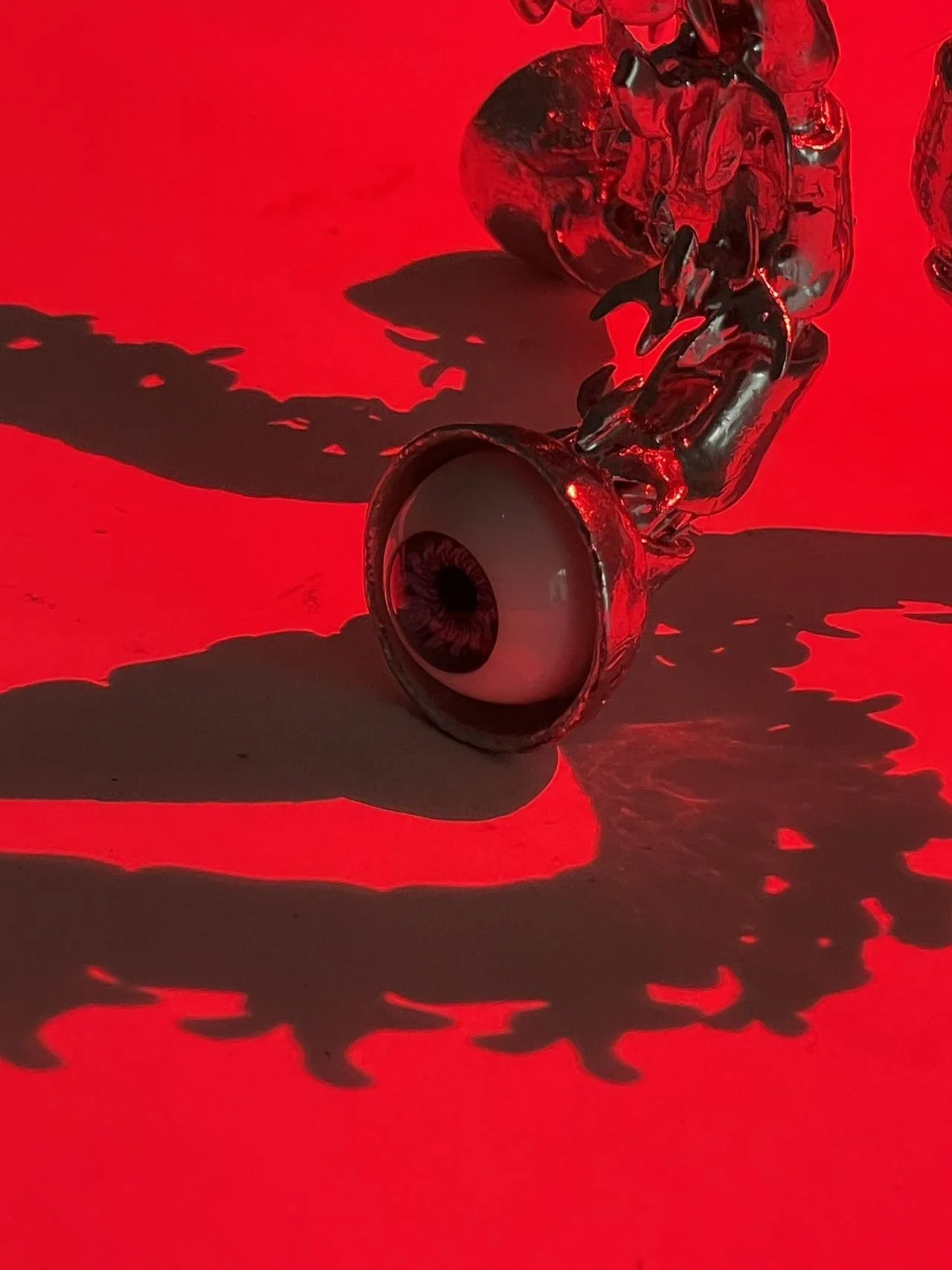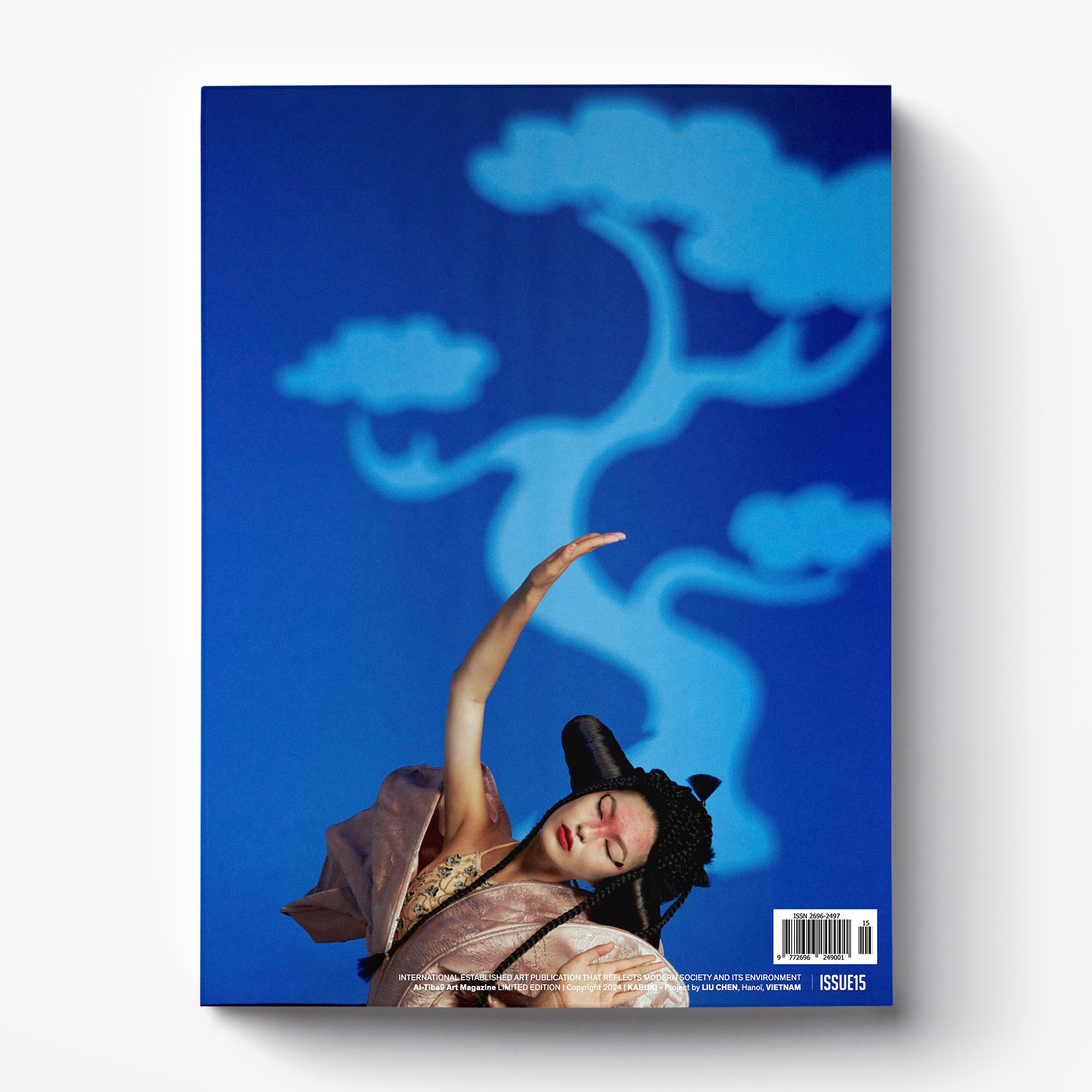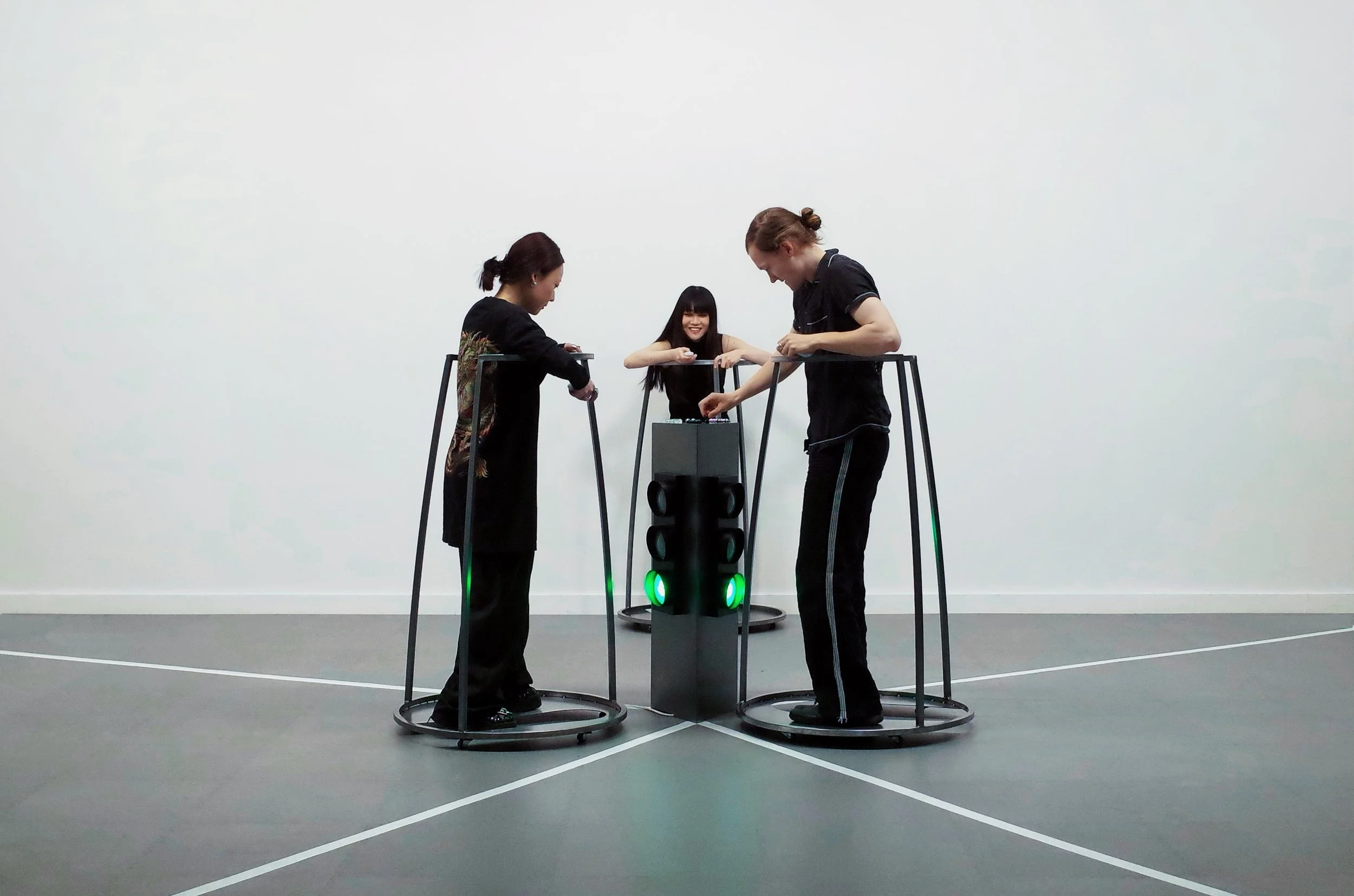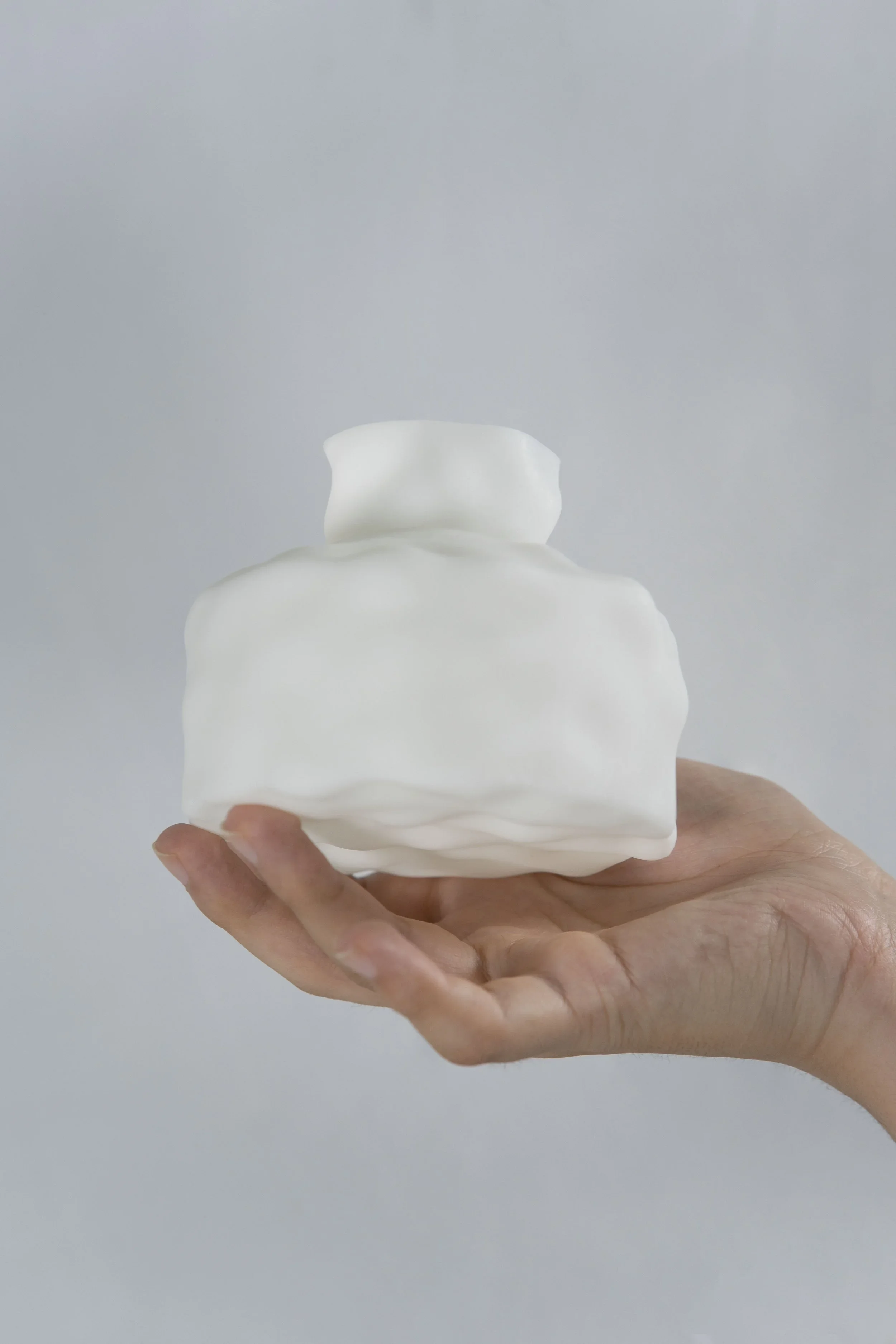10 Questions with Mengmeng Luo
Mengmeng Luo (Momo) is a Chinese visual artist born in 1999 in Changsha, Hunan province, now living and working in London. She graduated from Chelsea College of Art and Design.
Her artworks consist of visual images and sound effects. She specialises in creating scene-based fragments of cinematic space that combine to form non-temporal sequential narratives and are characterised by her own personal magical realism and black irony. Based on her past experience as a journalist and film director, much of her work relates to the dissemination of media information under catastrophic capitalism, including perceptual paralysis and extreme social events brought about by technological developments.
Her independently directed film Glitch in the Matrix was chosen for the international lift-off film session and got an award at the 2022 Athens International Film and Art Festival in Greece. This work participated in the Rea art fair in Milan, Italy, in 2023 and was selected for the publication of the Rea Art Fair 4 edition. This film was also selected for the 18th Arte Laguna Prize exhibition in Venice, Italy, in upcoming 2024.
Mengmeng Luo - Portrait
ARTIST STATEMENT
In Mengmeng Luo's early movie image creation, most of the narrative structure came from stage plays, with fixed scenes and non-temporal images as a link, which had some colours of theatrical films in the early twentieth century, focusing on interspersing elements in the story similar to commercial films, playing with editing, and expressing the subject matter of experimental films in the mode of a commercial film.
In this process, she gradually realised the limitations of the cinema screen, and the two-dimensional screen and the exhibition space together constructed a field for conveying information. In the UK, she did a lot of experiments on images and spatial fields, constructing some three-dimensional symbols beyond the screen. This includes playing images on a moving advertising vehicle (everything except a dog). She is committed to combining film, installation and sculpture to form Gesamtkunstwerk.
Her current project, Modalism, combines cinematic narrative and field, while the installations placed in the film by the filmmaker often delay or even subvert the operation of the machine in the dimensions of the object, thus presenting the film as a kind of materialised acinéma. The significance of installation art for cinema lies not only in the fact that it is an operable and deployable element but also in highlighting its own unique materiality so that the constituent elements of the film themselves carry narrative and metaphorical expression and ultimately transition to the materiality of the film in the sense of the overall installation.
AL-TIBA9 ART MAGAZINE ORIGINAL ISSUE15
INTERVIEW
Please introduce yourself to our readers. How did you get interested in art? And when did you decide to pursue art as your career?
Hi! I'm Mengmeng Luo (Momo), a London-based creator. Art is like a group of people sitting in a room. They don't use words to talk, they just throw things out and gradually form a new language. So, I don't think of art as a career; it's just something one creates naturally when someone wants to express oneself. I think art is a very inclusive subject; it doesn't have any clear boundaries with life. I don't really remember how I became interested in art, I just feel that my life has always been connected to art in some way.
How did you develop into the artist you are today? What training and experiences helped you in developing your practice?
The biggest change in my aesthetic perception of contemporary art came when I came to London and my work was discovered by Patricia Ellis, who was then Fine Art Programme Director at Chelsea College of Arts. Over the course of a year, my teachers, Ian Monroe and Galia Kollectiv, gave me a lot of critical feedback on my work, they were very patient and good teachers, even though I wasn't a very good student. I was also encouraged to do a lot of experimental things in London, especially the underground culture, which was a pleasant surprise, in contrast to the rigid academics, and made me more open to art that expresses itself rather than obscure texts.
Glitch in the Matrix, movie, 2023 © Mengmeng Luo
Your background spans journalism, film direction, and now visual art. How has these disciplines influenced your artistic journey, particularly in storytelling and narrative construction?
I'm backgrounded in the discipline of film, so I'll be writing with a strong focus on the narrative nature of the plot, i.e. a textual story as a backdrop to act as a string between works, and most of these texts will be based on chapters and non-temporal narrative structures. I used to work as a journalist for a while after graduating from university, and since then, I have had some exploratory ideas about the connection between communication studies and the general public, which I will focus on in my last two years of creative work, and as a result of which I like to construct some absurd symbols. I have a habit of using these different disciplines as a material or an object in my work.
Let's talk about your work. Your independent film "Glitch in the Matrix" has garnered international acclaim and has been showcased at prestigious events like the Athens International Film and Art Festival and the upcoming Arte Laguna Prize exhibition. Can you share the inspiration behind this film and its journey from conception to international recognition?
Glitch in the Matrix is a film inspired by some weird phenomena I liked to study a few years ago, when I was still studying some very traditional communication and journalism knowledge. I noticed that with the arrival of the information flow in China's self-media era, the single channel of news dissemination has been broken, and the public receives more sources of information. I began to wonder whether there would be malfunctions and information disorders at the port of information on the screen and whether the gradually declining credibility of the news, along with the unsolvable social contradictions, would become unappreciated. As a result, I created artwork based on documentary phenomena. A surrealistic and absurd approach is used to stimulate thinking about the symbolic dissemination of film content.
Glitch in the Matrix, movie, 2023 © Mengmeng Luo
Glitch in the Matrix, movie, 2023 © Mengmeng Luo
What elements, in your opinion, made the film so widely appreciated? Did you work around themes that can be deemed universal?
I was also the director, producer, writer, costume stylist and sound editor of this film. I think it was the high demand for the finish that made the film look visually appealing. I've always used some of the film industry's working methods to demand high quality from movie images in terms of the visual language of the shots because the visuals bring a very direct sense of viewing. Not only did I use R3D cinema equipment to shoot the film, but I also worked out a number of possibilities before the shoot, just like in a traditional feature film, so that I could get the shots I wanted at any cost. The post-production of the film was done by myself, and it took about a month to edit. I tried many different ways of arranging the shots, and I hope that the film can keep the main plot line while combining some imaginative shots.
Regarding the choice of subject matter, I've always been committed to exploring the weirdness of life, and I don't want my work to look sci-fi, so I've always insisted on using live-action photography.
More recently, your transition from traditional cinema screens to three-dimensional works is striking. Could you elaborate on the motivations behind this shift and how it has expanded your artistic expression?
The traditional image has many of the attributes that graphic art has; the movie image exists without a physical body. This is a double-edged sword, it is easy to transport, but people often find it hard to have the patience to see the whole movie image in an art exhibition. I have been trying to change this, as I want to turn a venue into a cinema or a theatre, to use the space as chapters of the story, to introduce the final movie image works, which is similar to the strong curatorial model of some galleries, such as the Saatchi Gallery's photography exhibition CIVILISATION. This is also the main goal of the project I am working on this year.
Everything except a dog, movie, 2023 © Mengmeng Luo
Everything except a dog, movie, 2023 © Mengmeng Luo
The concept of Gesamtkunstwerk, or total artwork, is central to your current practice, combining film, installation, and sculpture. How do you see these different mediums intersecting in your current project, Modalism, and what unique dimensions do they each bring to the narrative?
I have always tried to break the constraints of a single medium, and I hope to give full play to the advantages of various mediums. Just as an installation can serve as a three-dimensional extension of a film, it can build a field together with images, and the visual impact brought about by an installation monster appearing in a two-dimensional picture is far less intense than the sensory stimulation brought about by it appearing in a three-dimensional space. I have been trying to build this kind of connection; I am good at laying some ambush, combining sculpture and installation with images to create a weird atmosphere, which may be the sensory stimulation brought by a huge advertising car screen or just a sculpture that looks like an alien. Even if many people don't understand the concept of the project, at a time when the Modalism project is not yet mature, it will make the viewer think and try to deconstruct the connections behind it.
In your artist statement, you mention the significance of installation art for cinema, emphasizing its unique materiality. How do you approach integrating installation elements into your films, and what do you hope viewers take away from this fusion of mediums?
In traditional cinema, film installations serve only the plot or have a decorative role, not a strong functionality. I took inspiration for this from the Bauhaus stage play Triadic Ballet, and I needed to create an element that would shape the scene and the actors' behaviour, something apocalyptic and fantastical. I wanted the audience to get a sense of weirdness out of the piece, some doubt and curiosity towards the status quo. This required a huge investment of time and cost to build a number of elements, which, like fragments, were eventually pieced together to form a complete work.
Modalism, Sculpture, variable size, 2023 © Mengmeng Luo
Modalism, Sculpture, variable size, 2023 © Mengmeng Luo
Speaking of the public, how do you promote your work? Do you want to share any upcoming exhibitions or collaborations with us?
As well as working on getting the film to go through the traditional international festival model, I'm also simultaneously looking to preserve the right to screen images through spaces that can show both installations and images and some friends, and I are planning to rent a warehouse in East London to create a community of artists who can collaborate on some interesting exhibitions together.
Lastly, looking ahead, where do you see yourself and your work five years from now?
In London, everything changes very quickly; aesthetics and perceptions grow very quickly. I wanted to do as many weird things as possible in London, maybe spend many years making a piece.
Artist’s Talk
Al-Tiba9 Interviews is a promotional platform for artists to articulate their vision and engage them with our diverse readership through a published art dialogue. The artists are interviewed by Mohamed Benhadj, the founder & curator of Al-Tiba9, to highlight their artistic careers and introduce them to the international contemporary art scene across our vast network of museums, galleries, art professionals, art dealers, collectors, and art lovers across the globe.

























